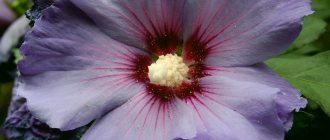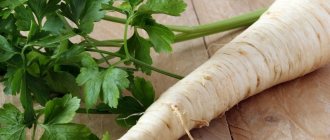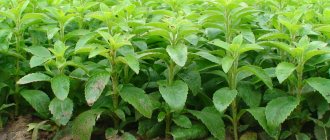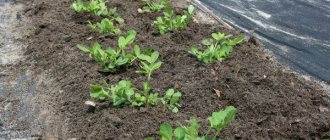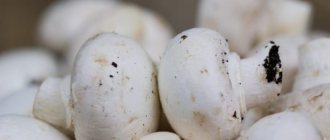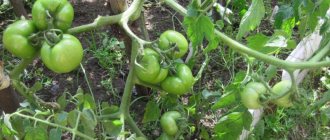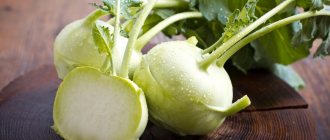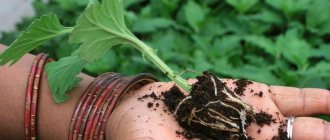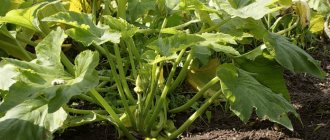In any garden you can see a standard set of vegetables that everyone grows. Cucumber, tomato, cabbage, potatoes and carrots are all familiar and have been eaten more than once. But what do you do when you want to try something new? Which crop to choose? The answer to your question is extremely simple - try growing an artichoke. It deserves a special place in your garden bed. By growing it, you will be able to enjoy a new, refined taste and get a lot of benefits from it. How to grow an artichoke at your dacha, and what you need to know for this, we will figure out below.
Main characteristics
Artichoke is a perennial plant that has wide, large leaves and a straight stem. More than 140 species of this plant grow throughout the world, but only 40 varieties are eaten. Summer residents who want to grow it on their site need to keep the following things in mind:
- Artichokes do not always bloom in the first year after planting. If you want to taste it, be prepared for a painstaking wait.
- The period of plant growth and development is at least 180 days. Because of this, in the central and northern regions of the country it is grown exclusively using seedlings.
- The plant loves warmth, and for normal development the ambient temperature should be 15-25 o.
The plant usually propagates using seeds, which can be purchased at any specialty store. In addition to propagation by seeds, you can use the method of dividing the mother plant, which shows good results.
Note! Artichoke heads do not grow to the required size at the same time, and this must be taken into account when harvesting.
Useful properties of artichoke
The beneficial properties of artichoke are due to its rich composition of vitamins, minerals and low content of carbohydrates and protein. That is why it is considered a very healthy and dietary vegetable. It is well absorbed and is recommended for diabetes mellitus as a starch substitute.
In the old days, all healers knew the beneficial properties of artichoke and recommended using it for gout and jaundice. It has also found wide application in modern medicine. Its active substances have a diuretic and choleretic effect. Artichoke extract is used for liver and kidney diseases. Its antitoxic effect is known.
For the use of medicinal tinctures and decoctions, artichoke leaves and roots are used. Decoctions help reduce uric acid and cholesterol in human blood. Traditional medicine recommends taking fresh artichoke juice for alcohol poisoning and as a diuretic. In the old days, they drank decoctions to reduce the smell of sweat, and also rubbed it into the scalp to treat baldness. Artichoke teas have an anti-inflammatory effect and have a beneficial effect on the gastrointestinal tract.
The artichoke is native to the Mediterranean, where it is still found in the wild.
Today, the beneficial properties of artichoke are used in pharmaceuticals. For medical purposes, it is used to treat urolithiasis and cholelithiasis, as well as to treat some forms of allergies. Its extract reduces the toxic effect on the body from the use of certain medications.
Research conducted today has revealed the following beneficial properties of artichoke:
- Liver and kidney cleansing
- Improved digestion
- Removing toxins from the intestines
- Reduced blood sugar
- Improving cerebral circulation
- Allergy Symptom Relief
- Positive effect on the appearance of skin, hair and nails
Helpful advice! To maximize the benefits of artichoke dishes, it is best to eat them on the day of preparation.
Artichokes cannot be stored for long; they quickly darken when exposed to air. When cooking, the peeled vegetable can be briefly placed in water with the addition of lemon juice or vinegar. Due to its rich mineral composition (mainly due to the potassium and sodium content), artichoke dishes are well suited for people with high acidity. For the same reason, with low acidity, these dishes should be consumed with caution.
Varieties of artichokes
As noted above, the artichoke has many varieties, of which no more than 40 are edible. However, of these 40 varieties, about 10 are most often used in cooking. Vegetable growers around the world consider only two types to be the most delicious and healthy:
- Spanish artichoke;
- prickly artichoke.
In each type, several varieties can be distinguished that have the most favorable growing conditions and ripening periods:
- Handsome. It has gained wide popularity among summer residents, and there are reasons for that. The first of them is high productivity. This is not surprising, because the plant begins to bear fruit already in the first year after planting. The second reason lies in the relative ease of cultivation compared to other varieties. The artichoke bush of the Krasaviets variety reaches a height of about 1 meter. Up to 12 inflorescences are formed on it, which reach a mass of 110 grams.
- Purple early. As you already understood from the name, the variety belongs to the early category. The bush of the plant is low compared to other crops, and grows no higher than 70 centimeters. No more than a dozen inflorescences are formed on it, the weight of which fluctuates around 100 grams.
- Sultan. The largest variety, the bush of which reaches up to 2 meters in height. The plant is mid-season and has 15 inflorescences, the weight of which does not exceed 90 grams.
- Gourmet. Like Sultan, it belongs to the mid-season varieties. The bush is quite tall, about 1.5 meters, but the inflorescences do not weigh that much. Average weight is 80 grams.
How does an artichoke grow?
Artichoke is a perennial herbaceous plant of quite large size. Initially it was found in Southern Europe, in the Mediterranean countries, but later it was brought to many countries where it took root well. Now in some regions, such as South America and Australia, the artichoke is considered a noxious weed.
Belongs to the Asteraceae family. The stem is single, erect, powerful, and can reach a height of 2 m. The leaves are long and wide, split, forming a basal rosette. At the ends of the stems there are flower baskets measuring up to 4.5 cm in diameter.
Important! The artichoke is very similar in structure to the well-known thistle, but it is much larger.
Where does artichoke grow in Russia?
The artichoke is not found growing wild in Russia. This is a heat-loving crop, and even small negative temperatures are destructive for it. In the southern regions, some farms are engaged in growing artichokes, but these plantings do not occupy large areas. For private farms, this vegetable is also more exotic than common practice.
In the photo below you can see how the artichoke grows:
Combination of culture with other plants
Not every summer resident knows that the yield of a particular crop depends not only on its care, but also on its environment. When growing an artichoke, it is worth taking this fact into account, because it has both “favorites” and undesirable neighbors. The “favorites” include:
- parsley;
- onion;
- celery;
- carrot;
- corn.
It is not advisable to plant an artichoke next to:
- horseradish;
- tomato;
- beans.
The harvest will be plentiful if the following were previously grown on the site:
- cabbage;
- legumes;
- potato.
By following these recommendations, you can grow a bountiful harvest that will decorate any table.
Growing artichokes: diseases and pests, finding the problem
Artichoke has few problems. Slugs can attack young foliage, and botrytis blight can cover older leaves. Hit the slugs with bait or slugs. If only a few leaves are infected with Botrytris blight, remove and destroy them. Treat the plant with a fungicide such as neem oil.
To grow artichokes, you need to set aside a large, bright area.
When can artichokes be planted in garden beds?
Planting plants in beds largely depends on the climatic conditions of the region. In places with a warm climate, the plant can be planted in beds as early as the second half of May. If your region does not have a warm climate, it is better to postpone planting to the summer. In this case, do not forget to work with the seedlings, taking them out into the fresh air. This will allow the shoots to harden and better take root in the summer cottage.
See also
How to properly collect and dry chicory roots and flowers at homeRead
If you want to take a chance and plant the seedlings as early as possible, do not forget to cover them with cloth or film at night. This is necessary to ensure that the plants do not die from overnight frosts. A good option would be to install small metal arcs over the garden bed, over which the film will be stretched in the evening, forming a mini-greenhouse.
If we look at individual regions, the artichoke can be planted:
- in the Moscow region - mid-May, early June;
- in Central Russia - in the second half of May;
- in the Urals - early to mid-June, preferably in a greenhouse;
- in Siberia - in mid-June. It is advisable to grow in greenhouse conditions.
Important! When growing artichokes in a greenhouse, keep in mind that the plant takes up a lot of space, and the greenhouse should be spacious and high.
Growing from seeds in open ground
Two seasons are suitable for planting artichoke seeds:
- second half of autumn;
- end of spring.
To do this, holes 4 centimeters deep are dug in the garden or vegetable garden. Several seeds are placed in each hole and covered with soil. Between the holes you need to maintain a distance of 70 centimeters. Artichokes grown in the south can be planted over long distances - from 90 to 130 centimeters. If you grow crops in this way, you will be able to taste the fruits only in the second year after planting.
Sowing seedlings
For summer residents growing this crop for the first time, one packet of seeds will be enough for planting. It is advisable to limit yourself to one variety and have a good understanding of the peculiarities of its cultivation. Seed preparation begins in the second half of February, several weeks before planting. Sowing seedlings is done like this:
- The plant seeds are placed in water for 11 hours.
- Water temperature is room temperature.
- After the seeds have swollen in water, they are placed on damp gauze and wrapped in it. The top of the gauze can be covered with film to prevent moisture evaporation.
- In this form, the seeds are stored in a warm place for 5 days.
- After the specified period, the package with seeds is put into the refrigerator. This must be done if you want to get a harvest in the first year after planting.
- Next, you need to prepare containers in which the seeds will be planted. To do this, prepare a mixture of humus, sand and turf soil.
- In prepared containers filled with soil, we make small grooves. The depth of the grooves should not exceed 4 centimeters.
- Seeds are planted at intervals of 4 centimeters from each other. This must be done carefully so as not to damage the hatched sprouts.
- A centimeter layer of soil is applied on top of the seeds, which is slightly moistened with a spray bottle.
- As soon as the sprouts have hatched above the ground and their first leaf has formed, the seedlings need to be removed to a cooler place (temperature - up to 15 o) and lighting installed next to the pots. This should happen approximately two weeks after planting.
Make sure the soil has moderate moisture. Do not dry out the soil or over-moisten it.
Planting and care: step-by-step instructions
Seed preparation
- Seeds must be placed in water for 10-11 hours to swell. Room temperature with a difference of a couple of degrees.
- After this, wrap them in a damp bandage and gauze and leave them warm for 5 days.
- If you want to get fruits in the first year, then you need to put the seeds in the refrigerator. This is done to harden them.
The gauze can be wrapped in film to prevent the water from evaporating.
Substrate preparation
For seedlings you need to prepare the soil; this should not cause any particular difficulties. To do this, mix turf soil, humus and sand. Read about the description and characteristics of the Candy apple tree variety at this link.
Capacities
There are no special requirements here. Peat, clay, and plastic pots are suitable, but in no case metal. Read about picking tomato seedlings here.
It is very convenient to bury seedlings on peat tablets or in pots directly into open ground.
Sowing seeds
- Furrows are made in the ground no more than 4 centimeters deep.
- We carefully plant the seeds at intervals of 4 centimeters, so as not to damage the hatched ones.
- The seeds need to be sprinkled with soil and moistened with a sprayer.
- At this stage, monitor the condition of the ground very carefully. It should not be over-dried or over-moistened.
When most of the sprouts hatch and the first leaves form, they need to be put in a cool place (15 - 17 degrees), and lighting should be installed. Leaves form 2-3 weeks after planting.
When the seedlings develop 4 leaves (about 2 months after sowing), they can be planted in open ground.
Picking and caring for seedlings
Plant picking is done in cases where the seedlings were grown in one container. Pots with a volume of 0.5 liters are perfect for picking. Picking is performed as follows:
- Soil consisting of sand and humus is added to the pots. A depression is made in the center of the container, which is watered.
- Plants grown in a common box are watered and removed one at a time.
- The main root of each seedling is pinched, after which they are planted in prepared pots.
- The finished pots are watered and put away in a warm place.
- 14 days after the plants are planted in separate pots, they are fertilized with mullein, which is diluted in liquid. The proportion is 1 to 10.
- After this, we wait another 14 days and add a complex of mineral fertilizers to the soil.
Plants need to be taken out into the open air to harden them off. It is advisable to do this in warm, windless weather.
Wintering artichoke
After the harvest and the onset of cold weather, the artichoke bushes are cut off at the very base and taken outside the site. In order to protect the root system from freezing, the beds are first covered with branches and straw, and sprinkled with earth with rotted manure and fallen leaves on top. In winter, snow is added to the area with overwintering plants.
If there are few bushes, then after removing the above-ground part, they are dug up, placed in old buckets, flowerpots or boxes and stored in the basement or cellar until spring.
The second method gives a better chance of preserving artichoke plants until next spring. When grown over many years, the bush produces a yield significantly higher than when the fruit is obtained in one season.
Planting in open ground
There are two ways to grow seedlings in open ground, depending on the purpose for which the artichoke is planted:
- for eating;
- For decoration.
If the artichoke is grown for food, planting is carried out in the garden:
- The soil in the area chosen for planting is dug up and fertilized.
- Humus, potassium sulfate and superphosphate are used as fertilizers. Humus must be added at the rate of 10 kilograms per 1 square meter.
- Beds are made, the height of which is at least 20 centimeters.
- The distance between the beds is 1 meter.
- It is advisable not to plant plants closer than 80 centimeters from each other.
- The beds must be watered and the ground covered with straw.
If the plant is grown for beauty, for example, in the garden, the planting algorithm changes slightly:
- Select a place that will be visible and easy to get to.
- At the planting site, a deep hole is dug, which is filled with compost and soil, mixed with turf.
- The diameter of the pit is 75 centimeters.
- The depth of the pit is 50 centimeters.
- The distance between pits is at least 1.5 meters.
- The plant is planted in a hole in a special peat pot.
- The pit is watered and covered with a layer of straw.
See also
Varieties and types of chicory, their description, beneficial properties and applicationsRead
In both cases, the landing site should have good access to the sun, which should not be blocked by any other objects. The site should not be exposed to much wind and have dry soil.
Due to the structural features of the root system, which is well developed in artichokes, the roots will rot if there is excess soil moisture. This will lead to the death of the plant. For planting, it is advisable to choose a place on the south side of the site.
How to grow an artichoke on a windowsill
This vegetable crop can be grown from seeds or shoots. Seeds purchased in a store must be soaked for 6-8 hours. For planting, shoots with a length of at least 15 cm are selected, since shorter ones may not survive. Artichokes begin to be planted as soon as the weather warms up. The plant has strong immunity to various diseases (Figure 8).
Figure 8. Growing a vegetable on a windowsill
Recommendations for growing artichokes at home:
- One plant needs a large container, at least 50 cm deep and about 100 cm in diameter.
- Provide good drainage, as the root system is easily susceptible to rot.
- The soil must contain at least one part of sand. It is recommended to select nitrogen-rich soil mixtures.
- You can prepare fertilizers yourself (mix humus and soil mixture a few days before planting the seeds) or use packaged fertilizers.
- Provide sufficient area for plants, as the height of an adult plant reaches one meter.
From the video you will learn even more useful recommendations for growing this unusual crop in open ground.
Features of growing in a greenhouse
When growing a plant in a greenhouse, there are several facts to consider:
- The artichoke reaches a decent size. Some varieties grow up to 2 meters in height. It follows from this that the greenhouse should be spacious;
- The room temperature should not fall below -2 o, otherwise the plant will die.
Otherwise, the care requirements in greenhouse conditions do not differ from normal ones.
Variety selection
Artichoke (Cȳnara) is a member of the Asteraceae family. Its homeland is considered to be the Mediterranean, where it is in great demand. The crop is most cultivated in Spain, Italy and France, as well as in California (USA), where this vegetable is especially valued for its exquisite taste. In addition, it is also a medicinal plant. It is actively used in medicine in the treatment of hepatitis, cirrhosis and various intoxications.
In Australia and South America, Cȳnara is considered a weed that is not easy to remove.
Growing artichokes is usually done in arid climates, where the plant feels most comfortable. However, in the process of spreading the culture around the world, breeders received more and more new varieties that were adapted to local environmental conditions. The State Register of the Russian Federation includes 6 varieties, which may differ in certain characteristics:
- Artist. Mid-season appearance. Its inflorescences are ready for harvesting in 120-130 days. It is a tall bush that can grow up to 1.5 m. Productivity is about 1.6 kg/1 m2.
- Gourmet. The height of the plant is 1.2-1.5 m, and the diameter is 0.8-1.2 m. Vegetables are ready for consumption after 120-130 days. Productivity – more than 1.5 kg/1 m2.
- Carciofiore. Italian selection. Heat-loving bush of medium size. Late-ripening variety, ready for consumption 200 days after the appearance of the first shoots.
- Handsome. A relatively low, weakly branched plant, 90-100 cm high. Ripens in 160 days. The inflorescence is formed quite large - 80-120 g.
- Sultan. Mid-season crop (economic suitability occurs after 120-130 days) of large size. The bush can reach 1.8 m in height or more, and the inflorescences are 25 cm in diameter.
- Caesar. The variety is mid-season. Vegetables ripen in 120-130 days. The bush reaches about 1 m in height. The inflorescences are spherical in shape with an average diameter of 15 cm and a weight of 90-120 g.
Related article:
Rules for growing basil from seeds in open ground
Each of the varieties presented in the State Register is zoned for all regions. These crops are perennial, however, in temperate climates they are grown only for one season.
Specifics of growing at home
It is possible to grow only artichoke seedlings at home. The plant itself, due to its size, is extremely difficult to grow in an apartment. To grow seedlings, you must comply with the following requirements:
- Water the seeds well.
- Before the first leaf appears, the temperature in the room with the seedlings should be at +25 o, after which the temperature decreases to 12 degrees.
- A few days before planting, the seedlings are taken out into the fresh air, thereby hardening them.
Harvest and storage
Harvesting begins when the baskets on the peduncle are about 2 weeks old. The inflorescences ripen unevenly, so they are cut off selectively. You can determine the harvesting period by this sign - the upper scales open up and begin to bend back.
You shouldn’t be late with cleaning, because the opened buds with blue petals are no longer suitable for food. Cut the baskets with a sharp knife, capturing a part of the petiole 4-5 cm long.
Freshly picked artichoke baskets have a decent shelf life. If you place them in a room with a temperature of +0...+1 °C (not lower), then the vegetables will be able to lie there for 2-3 months. Artichokes cannot be frozen, as in this form they lose their beneficial properties.
Rules for caring for crops
No special conditions for caring for artichokes are required; it is enough to fulfill the following requirements:
- water the bushes on time;
- loosen the soil and remove weeds;
- fertilize the beds.
Otherwise, the crop does not require additional time, and growing it is not difficult.
Watering the bushes
Watering is carried out in the afternoon. You can adhere to one of the following schedules:
- water the bush every other day with a minimum amount of water;
- water once every two weeks, spending up to 5 liters of liquid on the bush.
Regardless of which mode you choose, pay attention to soil moisture. It should not be excessively dry or wet. Otherwise, it will affect the growth of the plant and the quality of the harvest.
Loosening the soil and removing weeds
It is best to loosen the soil the next day after watering. This way you will give the plant access to oxygen, and it will develop harmoniously and correctly. During loosening, weeds are removed. This must be done until the plant is fully strengthened and comes into force.
After weeding can be done as desired. However, you shouldn’t push the plant too hard in any case.
Necessary fertilizers and fertilizing
Feeding the bush and fertilizing the soil have a positive effect on the plant, and are necessary not only when growing seedlings.
During the growth process, you also add mineral fertilizers, and this continues until the end of the bush’s life cycle. The complex of fertilizers remains the same, and another type of feeding is added to the adult plant, which is called “foliar”. It is carried out by spraying the bush with a nutrient solution of the following components:
- wood ash – 1 teaspoon;
- superphosphate – 1 teaspoon;
- potassium chloride – 3 teaspoons.
Such bait not only has a positive effect on the harvest, but also protects the crop from pests.
Sheltering the plant for the winter
To cover a plant in open ground you will need:
- Trim the plant's stems, leaving only 30 centimeters from the ground to the tip.
- Cover the bush with burlap or other fabric, for example, composite fabric.
- Sprinkle the ground around the bush with a layer of straw or sawdust. You can use fallen leaves. The layer should be 30 centimeters thick.
- After snow falls, you can rake it from nearby areas, covering the base and roots with a dense snow cap.
Protection from diseases and pests
Diseases that affect the bush are petal rot. Various types of aphids and slugs eat greens with particular pleasure. To combat them, the bush is treated with special preparations. This needs to be done in the spring.
Grow artichokes in the garden
You need to start sowing artichoke seeds in early February. To do this, you need to place them in damp sawdust until sprouts appear, and then the seeds are placed in the refrigerator for two weeks for vernalization (you need to cover them with film so they don’t dry out). Then the seed must be planted in separate containers. With the onset of mid-May, plants can be planted in a greenhouse, which will allow the first harvest to be collected in July (Figure 7).
When choosing a place in the garden for a crop, give preference to a dry, sunny and sheltered area from the wind. Soil preparation begins in the autumn with digging with a shovel and fertilizing the ground with humus (1 bucket per 1 sq. m.). With the onset of spring, two weeks before planting seedlings, you need to re-dig the area and apply complex mineral fertilizers (100 g per 1 sq. m.).
Figure 7. Growing and caring for crops in the garden
When planting seedlings in the ground, you can add one shovel of rotted manure and a handful of wood ash to the holes. During the summer period, plants are fed 4 times with mullein (1:10).
Conditions
While growing a crop, it should be watered abundantly and a number of manipulations should be carried out:
- Loosen the soil;
- Remove weeds;
- Carry out treatments against harmful insects.
To obtain large inflorescences, it is necessary to pierce the stems underneath with toothpicks when the vegetable has grown halfway.
Harvesting and preservation
You need to harvest according to the following algorithm:
- Once the top of the cone begins to open, you can harvest the fruit for consumption.
- It is advisable to leave no more than 3 flower stalks on the bush, on which 4 baskets will be located.
- You need to cut the artichoke in such a way as to capture some part of the peduncle.
Do not delay harvesting until the plant blooms; if this happens, the fruits will be too hard and unsuitable for eating.
Collected fruits are stored for no longer than three months at an ambient temperature of 1 o. If the storage temperature is higher and does not exceed 12 o, the fruit can remain suitable for consumption for up to 4 weeks.
Use of artichoke in food
The unopened buds of the plant are eaten. They are boiled in water with lemon juice, cooked in soups, baked with spices and olive oil. Artichoke is rich in vitamins and microelements. It is a tasty and healthy product, so it is recommended for people on a diet. Regular consumption of buds prevents the development of atherosclerosis and has a positive effect on the liver.
What are the benefits of artichoke
Important point. The appearance of blue leaves on the artichoke fruit indicates that the plant is overripe and is no longer suitable for food.
What is an artichoke
Artichoke belongs to the Asteraceae, and is a relative of thistle, dandelion and sunflower. The edible parts of the plant are like large buds. They grow on perennials with a height of up to 2 meters. About 800 cones can form on the bush, each 4-8 cm in size. Without flowers, the artichoke is represented by a rosette with powerful prickly leaves.
Perhaps, due to poor distribution, there are no varieties that are suitable for the conditions of a particular region. The plant does not tolerate severe frosts. For further storage, the artichoke is dug up or covered. When storing, it is important to place straw, sawdust or fallen leaves on top. In any case, it is important to choose a dark and cool place where the plant cannot germinate.
Artichoke growing experience
Vernalization of artichoke seeds
Vernalization of artichoke seeds should begin in the first half of February. The seeds are placed in a sowing box on damp sand. In this position they should be at a temperature of 22 - 25 C until the pipping phase (6 - 10 days). It is important that the sand is always wet, and in order not to wash away the seeds with a stream of water, spraying should be used. Then the seed box is placed on the bottom shelf of the refrigerator (temperature 0C) and kept for up to 15 days, until the tips of the roots darken. Now the seeds are ready for sowing.
Basic agrotechnical requirements
The artichoke is quite demanding on soil fertility. Planting, growing and care are associated with certain growing conditions. Fertile soils are suitable for the strange thorn. The plant is moisture-loving. However, it does not tolerate waterlogging at all. The area where plants are grown should be bright and well heated, protected from drafts.
Composition of artichoke
The artichoke plant can hardly be called a vegetable crop - in fact, we buy its unopened flowers in the store. Knowing this, you can imagine how delicate the taste and aroma of the young flower petals that make up the cone are; by the way, it tastes like a young walnut. Artichoke contains vitamins A, B1, B2, B6, B9, PP, C, E and K, as well as beneficial calcium, magnesium and phosphorus.
Ways to grow artichoke
There are three methods that can be used to obtain an amazing and unique bed of strange thorns: growing artichokes from seeds, seedlings and vegetative methods. Each of them will require compliance with certain rules. In the southern regions you can grow artichokes from seeds. Seed defrosting of a heat-loving crop is used only in areas where early spring sowing is possible. Artichokes are grown in seedlings as annual plants in cold climates with 90-100 days of warm weather. For such climatic zones, a vegetative method of propagating vegetables is also available.
The Importance of Water for Artichoke Hearts and Plant Vigor
Regardless of the variety that is planted, the goal is usually to harvest a crop with a delicate texture. The taste of the edible part of the plant is influenced by many factors, the most important of which is the presence of water.
Artichokes require a large amount of it to produce large, juicy buds. The plant may need to be watered three times a week during hot, dry periods of the year, especially if buds are forming at this time. Along with a lack of water, severe frost can destroy the nascent buds.
Water also benefits the artichoke's deep roots, which become fleshy and quite thick. They need to stay moist, especially during the dry months. You can also mulch the soil to retain moisture. Make sure that all water supplied to the base of the plant is well absorbed.
Poor drainage can lead to stagnation of water at the base of the stem, followed by rotting of the latter. If the winter is not very cold, damp soil can destroy the plant.
Tips for growing and benefits of artichoke
At the end of the summer, the unusual vegetable blooms. Cutting is done after a few weeks. Buds develop at the tips of one-centimeter stems.
The apical bud is usually the largest and the first to ripen. It must be collected with part of the stem directly below the bud. It should be large, dense and completely closed. Those buds that are not cut will open into delightful, purple-blue, 6cm thistle-like blooms. But the transformation of buds into flowers, by the way, can reduce the yield of the plant the next year if the plant is grown for many years. To prevent this, all buds must be cut off. Gardeners whose plots are in the best climatic conditions for plant growth can harvest crops within the first year. The harvest per plant can be up to 30 artichokes.
The cultivation and benefits of artichokes are worth the price of having an unusual plant in your vegetable garden. This amazing vegetable is not only decorative. Many people do not realize that this unusual plant is an excellent dietary and quite healthy vegetable. With a rich content of vitamins and minerals, vegetable dishes made from it are low in calories. This is an excellent part of a diet for weight loss. But the content of inulin transfers it to the category of medicinal plants. Artichoke is widely used in medicine.
Soil for artichoke
The artichoke, despite its external similarity to weeds such as thistle, will not produce a harvest, that is, it will not bloom on depleted soil somewhere in a secluded corner of the garden. In the fall, at the site where the vegetable will be planted, you should dig a hole 60 cm deep and 100 cm wide. A drainage consisting of large expanded clay, pebbles, clay shards or padding polyester is laid at the bottom of the pit in a 10 cm layer. Then the pit is filled with an earth mixture, which includes: 3 parts garden soil, 3 parts humus, 3 parts sand and 1 part peat. In spring, artichoke root cuttings and seedlings grown from seeds can be planted in such a hole.
